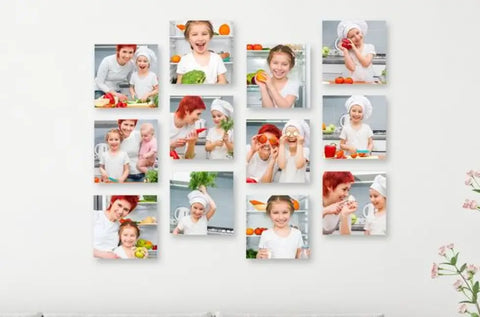Canvas Photo Prints
Cheap Canvas Photo & Picture Prints Wallpics
Having a photo album is great, but it's almost impossible to open it every day to enjoy the memories you've created in the past. So, what if you can decorate your walls with your precious memories? Wouldn't that be great? This means that you would no longer have to pull out your photo album every time you want to remember the past. All you have to do is look at your walls and then enjoy your memories with a sincere smile. This is where canvas photo prints come in handy.
What are canvas photo prints?
This is a fruit of new technologies. It doesn't matter how old the pictures are or what size they are, you can turn them into a unique design decision and order them as canvas prints online. This is the best way to preserve your memories because you don't have to worry about wear and tear. The important part is that you can create the design yourself.
You don't have to be a creative designer to create your canvas photos. The tools you need are available on the Wallpics platform. All you have to do is upload your images and use these online instruments to organize, resize, and color your photos. You can even change the current background to give your photos a unique modern look. When you're done creating, you just need to submit and place your order. Then just wait for Wallpics to finish printing your canvas picture prints and deliver them to your doorsteps. The whole process is easier than ever before.
How can you bring memories to life with canvas pictures?
We all take pictures of the exciting moments of our lives and store them on our phones. Sometimes we see interesting gifts of nature and take pictures of them. Thanks to technology, everyone can become a photographer. With a high-definition phone camera, you can capture the best moments and events without any special skills. The only downside is that these pictures only live on your phone.
So, what if you can bring your photos to life? What if you can bring the memories you have captured on your phone to life with canvas pictures? You don't need to be a professional to create canvas picture prints. Wallpics provides the platform for you to create the memories you have captured in the best way you can. It gives you the freedom to use any images of your choice and design them as you like. Then you can order canvas pictures without denting a hole in your wallet. It's the best way to bring your memories to life and share them with everyone.
Why should you choose cheap canvas wall art from Wallpics?
The fact that it is cheap does not mean it is inferior. Wallpics offers the best quality that can last a lifetime. This means you will get high-quality prints on a worthy cheap canvas. Just try to decorate your walls with canvas photo prints. Apart from creating memories, decorating your walls with canvas pictures also comes with aesthetic value.
Instead of having a boring wall or a wall sprinkled with plain-looking photos, you can create the one made of cheap canvas wall art. It is an ideal way to share your memories with your guests. You can create a photo story of your wedding and decorate your living room walls with it. It will definitely transform your living space into something magical. If you have more stories to tell, you can choose cheap canvas prints to create a series of endearing memory installations that you would love to share with other people.
What photos can work with canvas prints?
The fact is that any type of photos and images will be perfect for creating your canvas photo prints. These may be the pictures you have had for ages or recently taken photos. As long as it is in an image format, you can simply upload it to create your canvas pictures. Here are some sample ideas that you can use in your future projects:
• Family pictures
This block can include wedding, birthday, baptismal, newborn, Thanksgiving, Christmas pictures, etc. All you have to do is check your album or photo archive. You will definitely find family pictures that you would want to use. When you find these photos, simply upload them to the Wallpics platform and make any adjustments that you want. Then you can submit and place the order for your canvas pictures.
• Nature's gifts
If you love taking pictures of nature and want to bring some nature indoors, you can consider printing its images that you have taken with your phone. The images of nature's gifts, such as mountains, oceans, riverbanks, shrubs, birds, trees and leaves, skies, and a whole more, can be printed on canvas. If you have collected a lot of pictures over the months and years, you can also select from them to create your cheap canvas wall art.
• Random pictures
You may want something entirely different from family pictures and nature's gifts. Random pictures can also be very cute. You can find free stock images online and upload them on the Wallpics platform. You can upload as many as you want, depending on the canvas size. Next, edit them and add colors and texts. You are free to use the tools to create whatever you want. When you are done, you can submit your creation and place your order. Just wait a few days for your canvas photo prints and then use them.
Conclusion
You can bring your memories to life and turn your walls into a thematic place with cheap canvas wall art. At Wallpics, we offer you all the necessary tools that you need to create your photo prints. Upload your pictures on the platform, place an order, get your delivery, and begin changing your room.































 (4.9/5)
(4.9/5)










